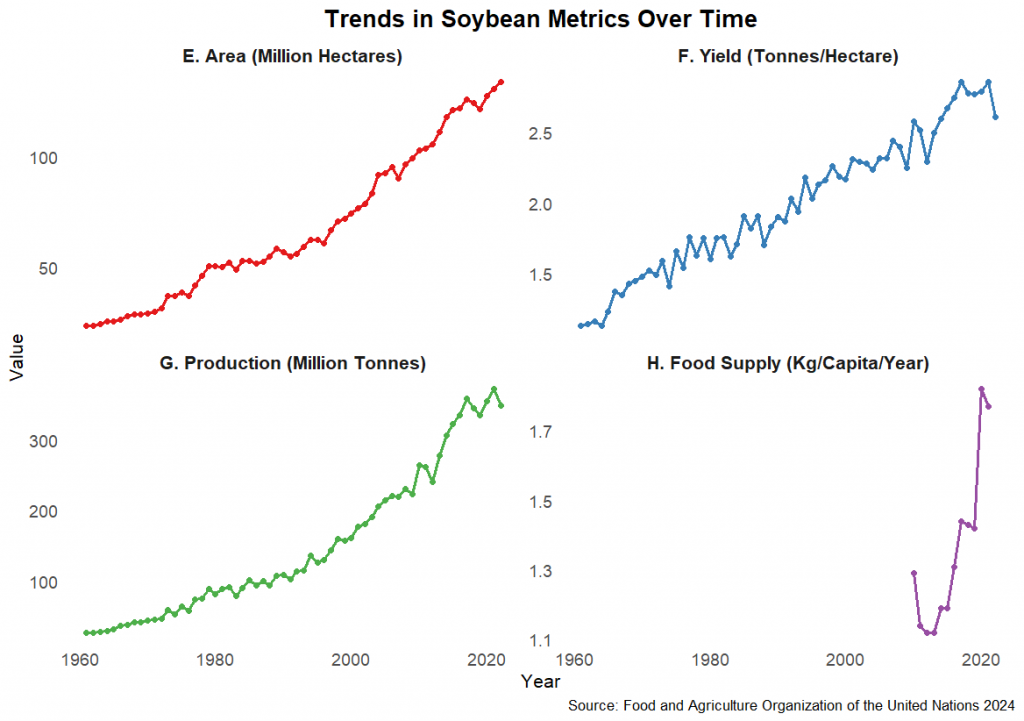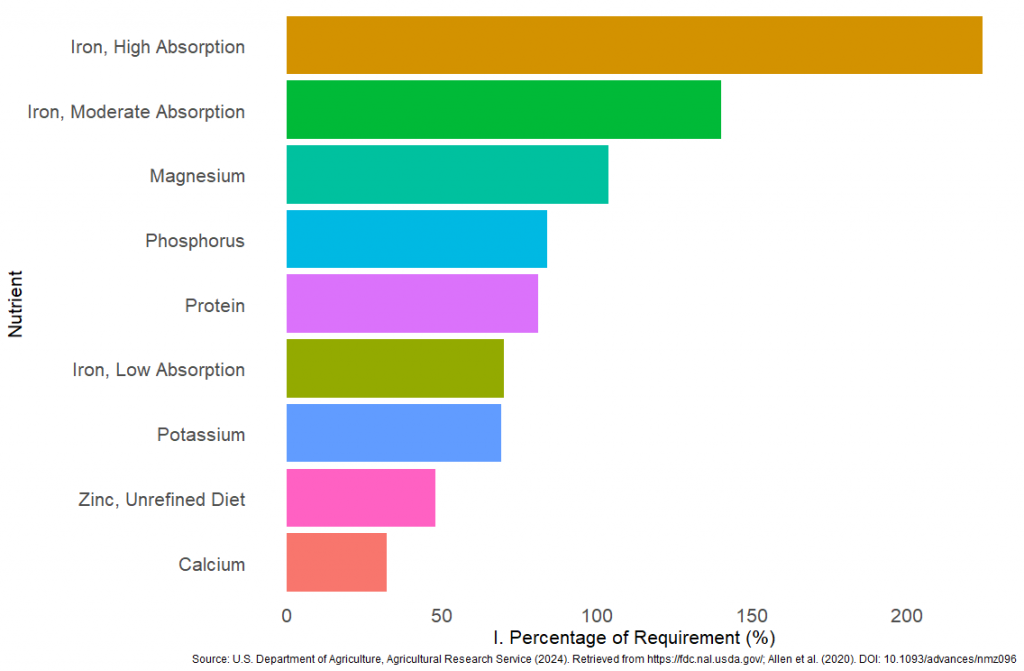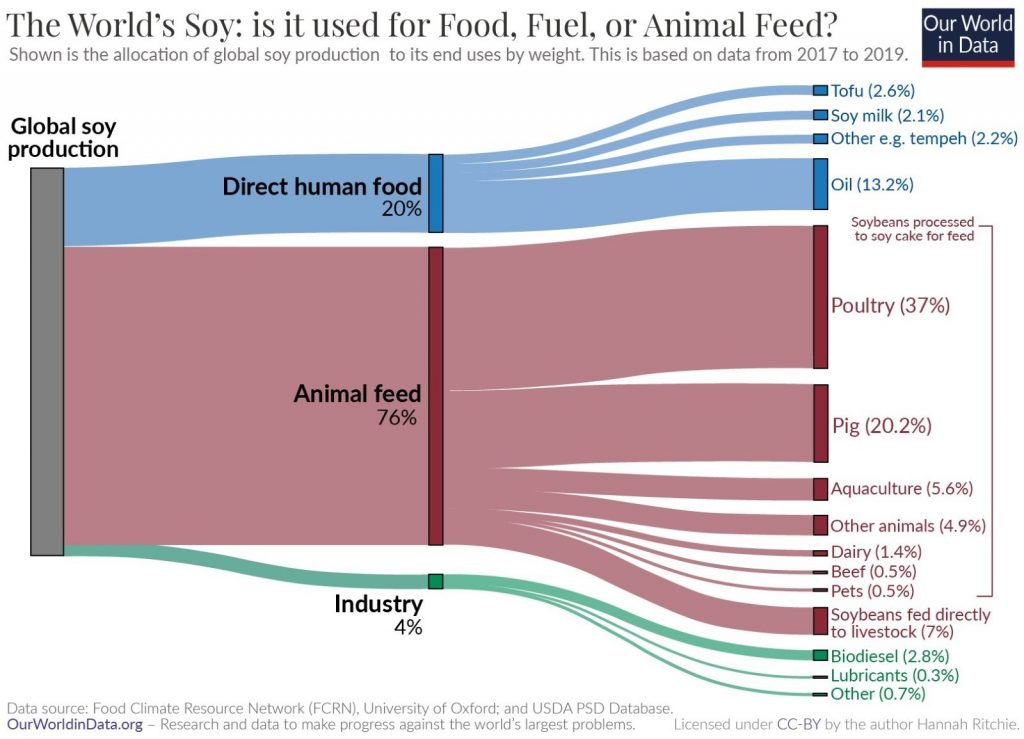
19 Aug Soybeans for Global Nutrition: A Numbers Story
Soybeans have gained significant importance in the global food system. From their origins as a regional crop primarily grown in China, they have transformed into a major global agricultural commodity over the past sixty years. Here, we explore the changes in soybean production, yield, area harvested, and per capita food supply over time, examining their current and potential role in global nutrition.
Charts A to D below shows the changes in soybean metrics over different periods:
1. From 1961 to 2022: Global area harvested increased by 462%, production quantity by 1198%, and yield per hectare by 131%.
2. From 2010 to 2021: Per capita food supply increased by 37% (kg/capita/year).

Global Soybean Production: Trends and Changes from 1960 to 2022
Today, soybeans are cultivated extensively, from North and South America to Asia and beyond. Various factors, such as advances in agricultural technology, better crop management practices, and the development of high-yield varieties, have contributed to this growth. Moreover, the mid-20th century Green Revolution further raised soy yields through the widespread adoption of improved seeds, fertilisers, and irrigation methods.
From 1960 to 2022, key metrics such as area harvested, yield, production, and per capita food supply have seen major growth, highlighting the growing importance of soybeans in the global food system. The most recent data from the Food and Agriculture Organization (FAO) show that global soy production reached approximately 350 million metric tons in 2022. Charts E to H shows the global trend in soybean production and per capita supply over time.

Major producers like the United States, Brazil, and Argentina have driven this growth (see map A below; Global Soybean Production Measured in Tonnes). The rise in production is closely tied to the expansion of the area harvested and improvements in yield.

Not only has global soybean production changed over time, but so has the area harvested for soybeans, especially in South America. Countries like Brazil and Argentina have converted extensive areas of land to soybean fields. Chart E above shows a rise from 24 million hectares in 1961 to 134 million hectares globally in 2022. Map B below shows 2022 area harvested for soybeans across different countries. This expansion has had both positive and negative consequences and was largely driven by rising demand for animal feed and vegetable oils. On the one hand, it has boosted global food supply, either directly or indirectly. On the other hand, it has raised concerns about deforestation and environmental sustainability.

Yield Improvements
Advances in agricultural practices, such as the adoption of genetically modified crops, precision farming, and improved pest management, have improved global soybean yields. Chart F Yield (Tonnes/Hectare) illustrates the global trend in soybean yields over the past six decades, demonstrating a steady increase from 1.1 t/ha in 1961 2.61 t/ha in 2022. This upward trend highlights the yield effectiveness of modern farming techniques.
However, these yield improvements have not been uniform across all regions. While soybean yields per hectare are high in specific African countries, particularly in Uganda (6.80t/ha), many other countries in the region have not experienced similar progress. Map C below indicates the global variation in yields. In 2022, the global average yield per hectare was 2.61t/ha, but this is driven by a few very high-yielding countries, with most countries falling below this number.

Per Capita Food Supply
The per capita food supply of soybeans available for human consumption has also witnessed a considerable increase. Soybeans are valued as a source of protein and essential nutrients, such as iron, that are critical for food and nutrition security worldwide.
Chart H Food Supply (Kg/Capita/Year) depicts the rise of soybean consumption per capita across the world, showing an increase from 1.29 kg per capita per year in 2010 to 1.77 kg per capita per year in 2021. Map D below shows the global distribution of soybean food supply available for consumption across various countries in 2021.
Two key observations emerge: firstly, countries with the largest harvested areas and production, such as the United States, Brazil, and Argentina, have lower per capita food supply – likely due to their focus on exports and industrial uses, including livestock feed. Secondly, soybean supply for food is highest in Asia, particularly in countries like China, Japan, and South Korea.
This concentration highlights the role of these nations in global soybean consumption patterns, driven by the high dietary integration of soy products such as tofu, soy milk, and tempeh, as well as the increasing demand for plant-based alternatives to animal proteins.

Global Soybean Allocation: A Closer Look at Its Major Uses
Soybeans are a major global crop with diverse uses, but a striking majority of this valuable resource is directed away from human consumption. Chart I show the breakdown of soybeans uses from 2017 to 2019. On the left, we see global soy production, followed by its three primary uses – direct human food, animal feed, and industrial processes – and the final products on the right. More than one-third (37%) of global soy is used as feed for chickens and other poultry, about 20% for pigs, and 6% for aquaculture. Surprisingly, only 2% is used in beef and dairy production.
In contrast, only a modest 20% of the world’s soy is used directly for human food, with the majority processed into soybean oil. Traditional soy-based foods such as tofu, soy milk, tempeh, and edamame beans make up just 7% of soy use. This distribution raises important questions about food priorities and sustainability in our global agricultural systems.
Addressing Nutritional Gaps: The Potential of Soybeans to Combat Iron and Other Deficiencies
Nutrient deficiency, especially iron deficiency, remains a critical issue in global nutrition. Map E illustrates the prevalence of anaemia among women of reproductive age (15–49 years), highlighting significant public health challenges in regions such as Sub-Saharan Africa and South Asia. Iron deficiency can lead to severe health consequences, including anaemia and impaired cognitive development, particularly affecting vulnerable populations like women and children.

Soybeans, rich in iron and other essential nutrients, offer a potential solution to these nutritional gaps. Chart J below presents the nutrient profile of soybeans per 100 grams, based on data from the United States Department of Agriculture. This chart shows the potential of soybeans to meet various nutritional requirements, including calcium, iron, protein, magnesium, phosphorus, potassium, and zinc.
For example, Chart J reveals that soybeans are notably rich in iron, providing 15.7 mg per 100 g. This amount meets 70% of the requirement for diets with low iron bioavailability. While soybeans are rich in iron, it’s important to note that this is non-heme iron, which is less readily absorbed than heme iron found in animal products. Therefore, enhancing the absorption of non-heme iron, such as through the consumption of vitamin C-rich foods, can optimise its benefits.
Beyond iron, soybeans can fulfil 48% of the daily zinc requirement (unrefined diet), 81% of the protein requirement, and about 101% of the phosphorus requirement. Although this focuses on a select few nutrients, it highlights the nutritional density of soybeans, making them a valuable resource to address nutrient deficiencies, particularly in regions where these gaps are common. It is important to note that these numbers refer to whole soybeans as many processing methods reduce the nutritional content of soy in consumer products.

Key Takeaways
In summary, while global soybean production has risen sharply, particularly in major exporting countries like the United States, Brazil, and Argentina, most soybeans are used for livestock feed, biofuels, and industrial applications. Only 7% is used directly for human consumption. Current global production is substantial, but redirecting more of it to human consumption could enhance its potential to improve global nutritional outcomes, as current use patterns limit its potential. However, despite its rich nutritional profile, soybeans alone are not a panacea. It could be part of a broader strategy that includes supplementation and other dietary interventions to address global nutritional deficiencies.
This Thought of Food was written by Ejovi Abafe as part of an ongoing PhD project, emphasising how land use for food production can improve global nutritional outcomes, while considering land suitability for production.






